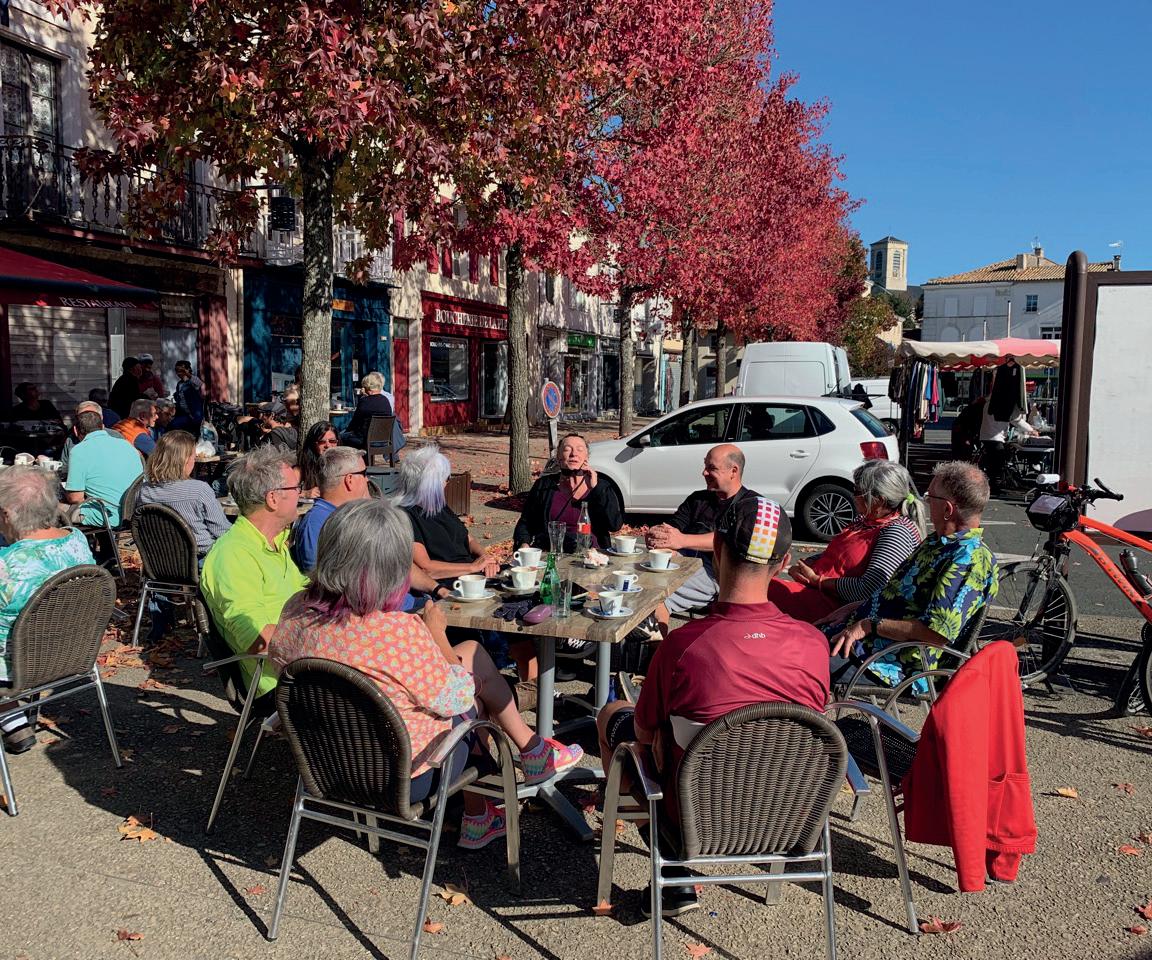
14 minute read
La Vie En France
View from the Vendée
November 2022
by Karen Taylor
You know how it is with us Brits when we first move to France – we don’t just buy a house, we buy a house, & a barn, & outbuildings, & a swimming pool, & 3 acres of land, and…. You get the picture! And yes, of course we did exactly the same thing ourselves (well, minus the 3 acres anyway, we ‘only’ have ¼ acre!). In fact as far as David was concerned, we bought a barn with a house attached (but that’s another story!).
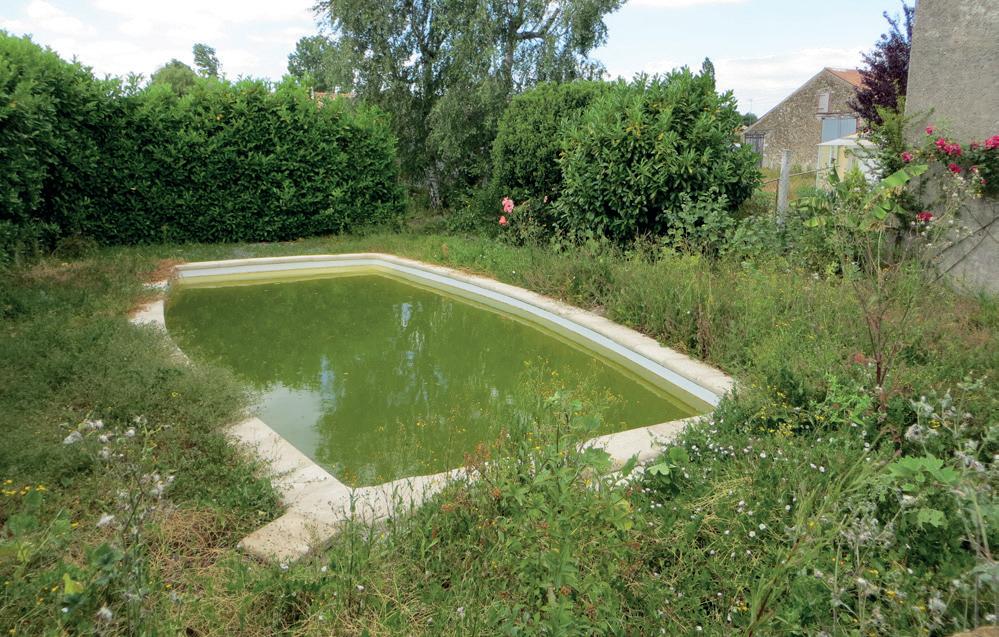
To be honest, the pool was a bit of a bonus. I call it a pool and not a swimming pool because you’d have been forgiven for confusing it with a pond when we first saw the house. We even had to get the fosse septique chappy over to suck up the sludge at the bottom! Of course a swimming pool is such a luxury for anyone who’s lived north of the English Channel. We’re all seduced by those estate agents’ photos of azure blue pools glinting in the sunlight. And to be fair, that’s true for a good part of the summer. Added to the fact that we’re extremely popular with family & friends for 3 months of the year! Admittedly we probably spend more time sipping apéros at the poolside than actually swimming in it, but that’s not the point…
But, and it’s a big BUT, a pool does need regular TLC. Luckily David’s happy to potter round the pool every day fishing leaves & debris from the surface, then once or twice a week, he attaches a…um…an attachment to the side wall to ‘hoover’ the pool floor. Sadly I’m not very technical, so I leave that little job to him! And now here we are at the end of the season, garden furniture stored until the spring, protective security cover in place, yet the pool maintenance is still not complete. The pump house, that has served us so well throughout the summer, is now ready for a fresh coat of wood stain – now that is a job that I can do… So, would I recommend having your very own pool in the garden? The answer is a resounding ‘Yes’ (assuming of course that you have a willing & able ‘pool boy’ at your beck & call!!)
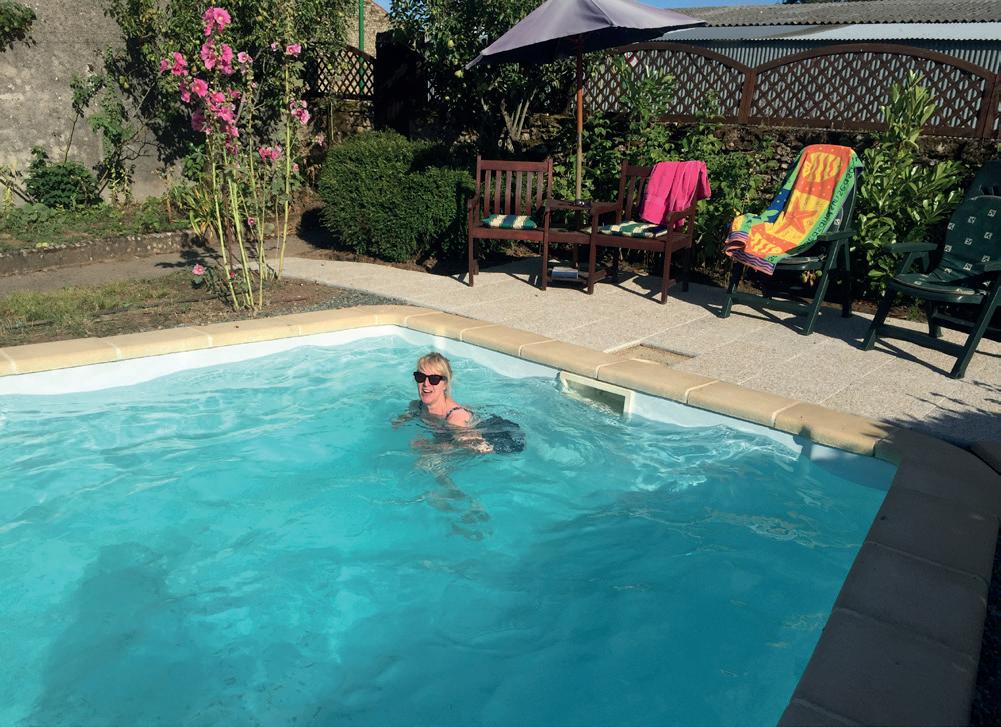
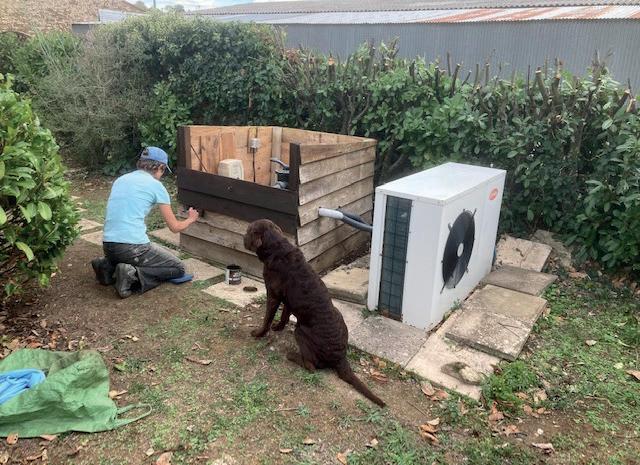

November 2022
JUST A HINT OF FRENCH
BISE ou POIGNÉE DE MAIN ?
by Anne Alonso
Les français adorent se faire la bise, comme vous avez pu sûrement le remarquer !! bien plus que de se serrer la main (= se donner une poignée de main). Mais, malheureusement, depuis l’arrivée de la Covid, cette habitude tend à disparaître. Espérons que nous pourrons reprendre nos embrassades bientôt !! Je vous donne quelques petits conseils concernant « la bise » et « la poignée de main » dans un contexte sanitaire sans Covid, comme c’était avant… Lors d’une première rencontre, les français, en général, se serrent la main en se présentant ou en saluant la personne : « Bonjour, Anne »(= Bonjour, je suis Anne mais « je suis » n’est pas indispensable) ou « enchanté(e) »,« ravi(e) de vous rencontrer ». Les hommes, comme les femmes, se serrent la main. Toutefois, certaines personnes peuvent vous faire la bise lors d’une première rencontre. Ce geste est un peu plus intime qu’une poignée de main et cela dépend surtout du contexte. Si vous êtes invité(e) chez des français, ils peuvent vous embrasser, même si c’est la première fois que vous les rencontrez. Un(e) français(e) pourra ainsi vous dire : « on se fait la bise ? » avant de vous embrasser, un peu comme s’il vous demandait l’autorisation ! Mais dans un magasin ou un restaurant, le vendeur ou serveur ne viendra pas vous faire la bise !! Soyez rassuré(e) ��
1, 2, 3 ou 4 bises ? 1 seule bise n’est pas très fréquente. Dans la majorité des cas, faire 2 bises est habituel : 1 bise sur chaque joue, pas de jaloux !! Bien qu’il n’y ait pas de règles strictes, le nombre de bises dépend souvent de la région où vous habitez. On fait une seule bise à Brest, 3 à Marseille et 4 au nord de la Loire. La carte de France jointe pourra vous aider à y voir plus clair. Mais quelle joue faut-il tendre en premier ? Au sud de la France on tend davantage la joue gauche, au centre et au nord c’est la joue droite !! En ce qui me concerne, habitante des Deux-Sèvres, je tends la joue droite et je fais 2 bises mais, soyez tranquille, il n’y a rien d’obligatoire, vous pouvez continuer à serrer la main si la bise vous dérange !
Pour conclure, bien que la bise soit en voie d’extinction aujourd’hui, Covid oblige, je vous conseille tout de même de ne pas hésiter à la faire si vous voulez vraiment adopter « le mode de vie français » !
À bientôt et…….. grosses bises !!
Anne (qui aime faire la bise !).
LEXIQUE DE VOCABULAIRE :
• Faire la bise : To kiss somebody • Une poignée de main : A handshake • Tendre à disparaître : To tend, to seem to disappear • Des embrassades : Hugging and kissing • Toutefois : However • Lors : At the time of, during • Un peu comme si : Almost as if, a little as if • Demander l’autorisation : To request, ask permission • Soyez rassuré ! : Don’t worry ! • Habituel : Usual • Chaque joue : Each cheek • Bien qu’il n’y ait pas de règles strictes : Although there are no strict rules • Voir plus clair : To get a better idea • Tendre la joue : To offer one’s cheek • Déranger : To trouble, to bother • En voie d’extinction : Is disappearing, is dying out • Covid oblige : Because of Covid • Le mode de vie français : The French way of life • Grosses bises : Lots of love
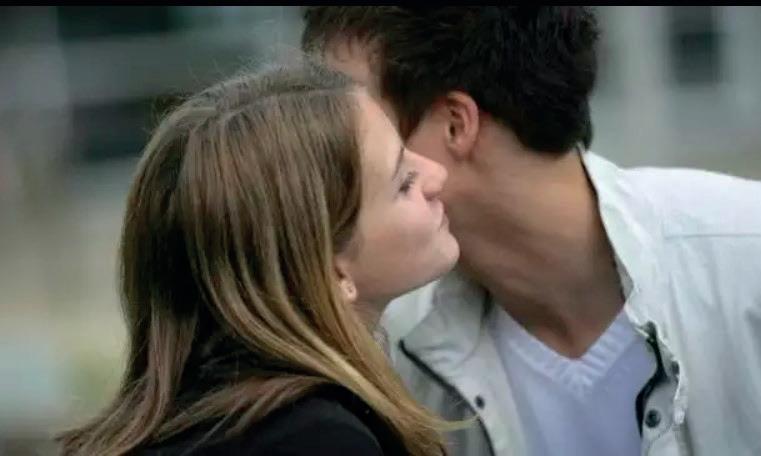
Anne is a well-known and much loved teacher of French to the English speaking community. She can be contacted via email at annealonso64@gmail.com
le Beaujolais nouveau est arrivé !
by Sue Burgess
Love it or hate it (que vous l’aimez ou que vous le détestez), the story of Beaujolais Nouveau began in 1951 when a by-law (un arrêté) made it illegal for winemakers (des vignerons) to sell their wine before the 15th December of the year of the grapeharvest (le vendange). The winegrowers of the Beaujolais region were annoyed (s’indigner), because they were used to selling their wines earlier. The wine cooperative of the Beaujolais area (L’union viticole du Beaujolais) asked for authorisation to sell their early wines (en primeur) before that date. Their request was accepted, and they were allowed to sell their wines from the 13th November 1951 provided that the labels (les étiquettes) on the bottles contained the word « nouveau ». So Beaujolais Nouveau was officially sold for the first time in November 1951. Between 1951 and 1967, the date for selling Beaujolais nouveau was not set to a particular date and varied from year to year. From 1967 to 1985, the date was fixed on the 15th November but since than the official date is fixed on the third Thursday in November (le troisième jeudi de novembre) at midnight (minuit) in the night between the Wednesday and the Thursday (dans la nuit du mercredi au jeudi). Over the years the date of the release of the Beaujolais nouveau became a real event, celebrated in France and throughout the world. What made the event successful is festive, friendly and good natured image of the wine and event (l’image festive, conviviale et un peu « bonne franquette »). Without forgetting the reasonable prices (le prix abordable) and the fact that it is a wine which is easy to drink (son côté facile à boire). A new wine (Un vin primeur) is not a wine to be kept (un vin de garde), It should be drunk within 3 to 6 months. Ideally serve lightly chilled (servez-le légèrement rafraîchi), between 14 and 15°.
Vocabulary / Vocabulaire
Bottle
une bouteille A cork un bouchon Cork (material) le liège Label une étiquette The winegrower le vigneron The cellar master le maître de chai The cooper Le tonnelier The Wine merchant le caviste Taste le goût Aroma les arômes Fruity fruité Light léger Barrel un fût Wine tasting dégustation de vins



If you operate a business as an auto entrepreneur, there are some changes that came into effect in May 2022 of which you may need to be aware. Read the article on page 61 of our June issue and/or speak to your accountant/advisor.
Life in 79
GUNS AND ROSES
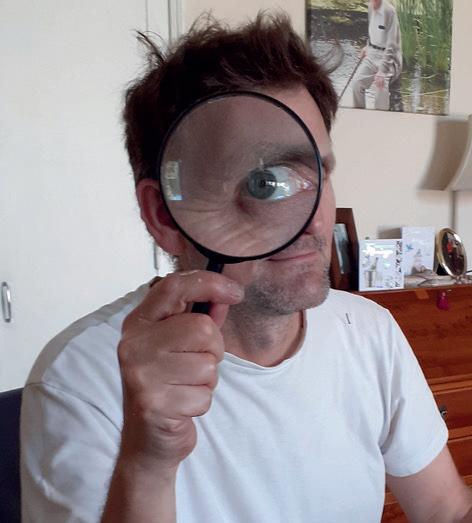
by Stephen Shaw
It is that time of the year when a collection of hillbilly vehicles appear at the edge of our garden. The sound of birds chirping is shattered by the screaming of baying dogs and a Boggis, Bunce and Bean collection of men in Hi-Vis orange jackets muster, looking like an angry mob of Liberal Democrats tanked up on moonshine and eager to kill anything that moves (often each other or some innocent bystander). Yes, it's that Chasse time of year. uncle of his who had used it for shooting parrots in South America. It was affectionately known as the parrot gun. There weren't many parakeets in Hertfordshire in the '80s so pater set his sights on Br'er rabbit.
If you are off out for a leisurely stroll after Sunday lunch be sure to don your striped bobble hat and multicoloured coat. Now is not the time to go a-wandering down a country lane in your wild boar jacket with complimentary coypu hat.
I'm not good with guns. Even the recent sight of soldiers at Poitiers Airport packing automatic weapons, made me break out in a sweat. My family's history is peppered with gun related incidents. In fact I'm lucky to still be alive.
My grandfather only had one eye. I erroneously thought he had lost it while opening a bottle of Champagne; the cork blasting into his eye socket on release. I was recently informed that he actually lost it when, as a child of six, he was flattening spent shotgun cartridges with a hammer and one still had some life in it. The only positive to discovering this is that my irrational fear of Champagne bottles has subsided.
My father is a keen gardener. We used to live in an old vicarage surrounded by a large garden which he would toil in; manicuring the lawns and herbaceous borders. But he was often frustrated by the woodland creatures who conspired against him. Badgers would come in the dead of night and dig great troughs in the lawns. Molehills would pop up all over the place when he wasn't looking and an army of rabbits would decimate the borders and vegetable patch. One Sunday lunchtime the whole family was sitting around the table enjoying meat, veg and a family argument, when my dad looked out of the window and saw a rabbit nibbling on his prize Pelargoniums or some such flora. In his most authoritative Lord-ofthe-manor voice he shouted “Bring me my parrot gun!”.
On its arrival, the kitchen window was opened, the firearm 'broken' and two cartridges inserted.
When the butt of the gun was brought up to the barrel there was the most deafening bang as the gun went off. Blasting a sizeable whole in the kitchen floor.
My mother screamed, various bits of cutlery, roast potatoes, meat and gravy went flying through the air as me, my brother and sister all jumped out of our skins. I couldn't hear anything except a whistling noise, but felt I was giggling nervously. The family Labrador who had been sniffing around the muzzle of the gun at the time of discharge (and was lucky not to have had her head blown off) started trying to tunnel through the kitchen floor and the rabbit hopped off in the direction of the vegetable patch.
A few days later, so ashamed of his Farmer McGregor type behaviour, my father wrapped the shotgun in numerous bin liners and handed it in at the local constabulary.
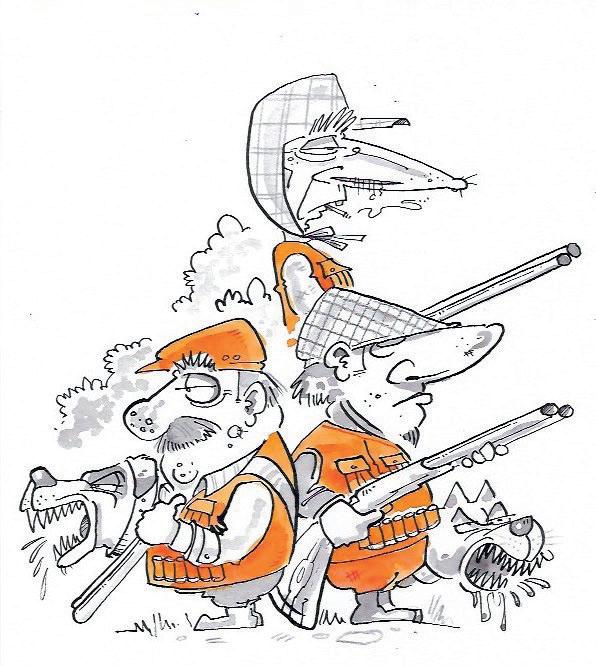
He tried a variety of things to keep the rabbit population at bay. Chicken wire was used to surround beds and precious shrubs (the garden took on the appearance of Stalag Luft 3). A mail order of 'scent of tiger' was purchased at great expense and dowsed on old underpants which were strategically hung on poles around the garden.
At some point he came into the possession of an old family heirloom. A gun. A shotgun. It had belonged to an N.B. The family dog went on to live a long and happy life; me, my brother and father suffer from tinnitus; the hole in the kitchen floor is still there and both rabbit and parakeet population are thriving in South-West Hertfordshire.
If you would like to read more ramblings from Mr Shaw, go to www.lifein79.blogspot.com

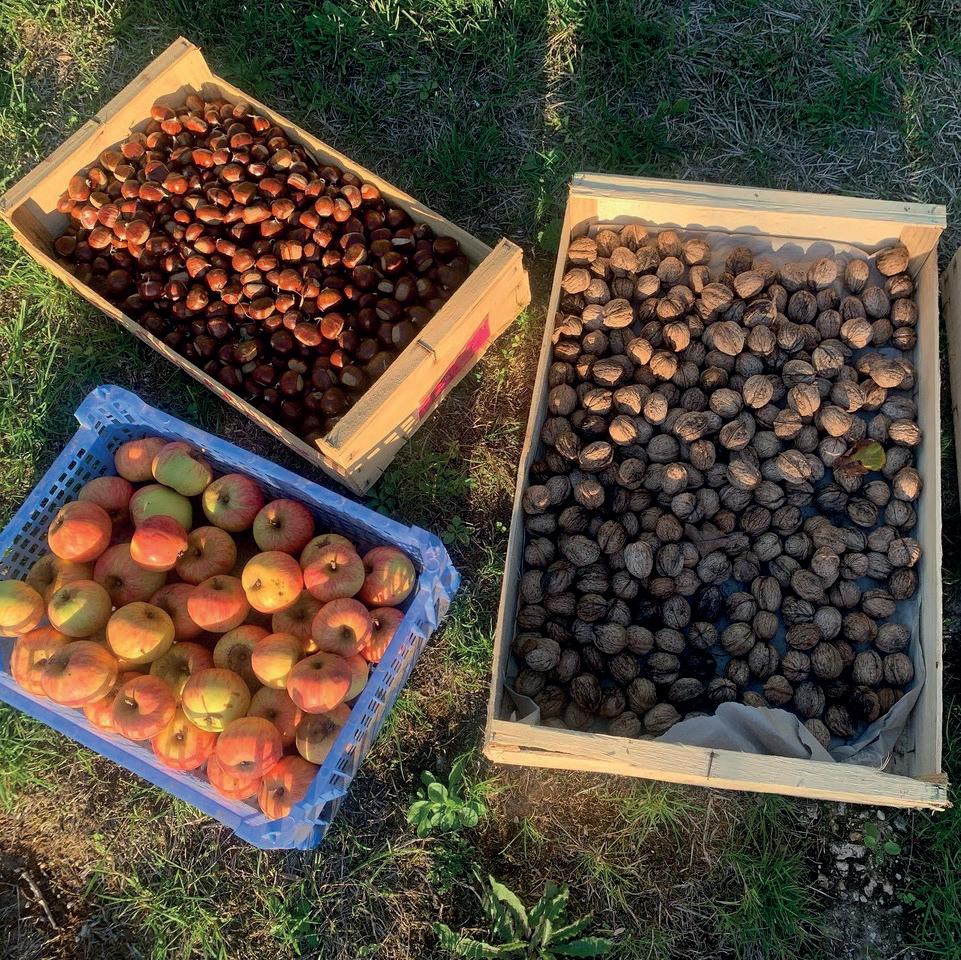
signs of the changing seasons by Jacqueline Brown
By early October, the vibrant green of the grass/weeds in the courtyard meant mowing the lawn was back to the top of the never-ending house and garden to do list. The cooler temperatures meant it was time to deflate the hot tub and pack it away, then my cheery bunting that has hung on the gazebo all summer was washed, carefully folded and stored for spring.
Whilst I wasn’t surprised at how quickly the grass recovered its green, the quantity and size of the walnut and sweet chestnut harvest did surprise me this year. Picking the fallen walnuts became a daily task as we enjoyed a mint tea after lunch, and we soon filled plenty of crates that spent their days drying in the sun as we diligently did the walnut crate shuffle. The chestnuts required a bit more effort as the soil in our village is not to the liking of the chestnut tree. A little to the northeast, towards Sauzé-Vaussais, the soil becomes a much richer orangey brown colour, and it is here where the chestnut trees thrive.
Our early autumn bike rides became chestnut hunting adventures, the golden glowing hedgerows a colourful contrast to the dry yellow verges of summer. With gardening gloves for protection, we stopped underneath each loaded tree to pick through the spiney husks for the shiny treasures, filling our panniers with our haul. The roasted chestnuts have been frozen and will be added to homemade soups and risottos over winter. There is nothing quite like a warming soup on a chilly winter lunchtime, but I will miss our butternut squash soup this winter. I did sow a few seeds, but I was way too late, and the plants struggled to grow let alone fruit. At least the chestnuts should help fill the gap, with their creamy texture and nutty flavour.
Our apple tree has also kept me busy in the kitchen for days. They are a sweet, crunchy apple with a bit of a bite and are perfect stewed, made into chutney, sliced or diced in salads, or baked into cakes.
While the weather holds, Saturday mornings will still be bike rides to the Chef-Boutonne market, accompanied by coffees and croissants, enjoyed with friends on the terrace of a café. In Autumn the red leaves of the trees lining the market square put on a spectacular show of colour that is as much a feast for the senses as the smell of freshly roasted chicken from the rotisserie stand. Whilst waiting my turn to buy eggs, I couldn’t help but smile as I listened into the conversations between the stall holder and the ladies in front of me. When they asked for a freshly cooked chicken, they were always asked how many people they were feeding before the perfect sized bird could be selected and carefully packaged, along with the side order of potatoes that had been roasted under the cooking birds. French market shopping is about so much more than just picking up the essentials from a supermarket.
